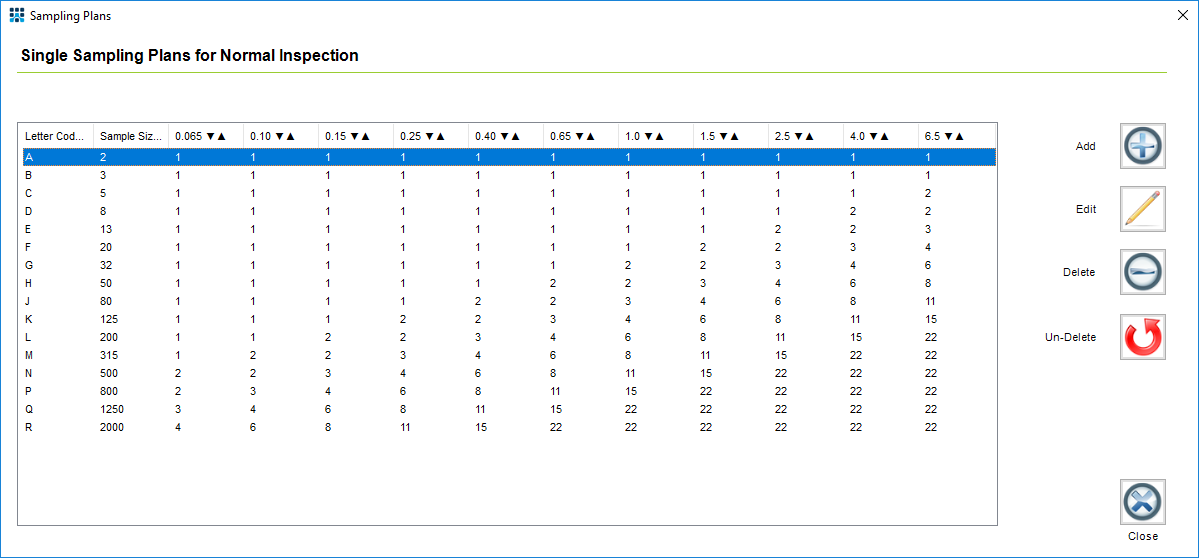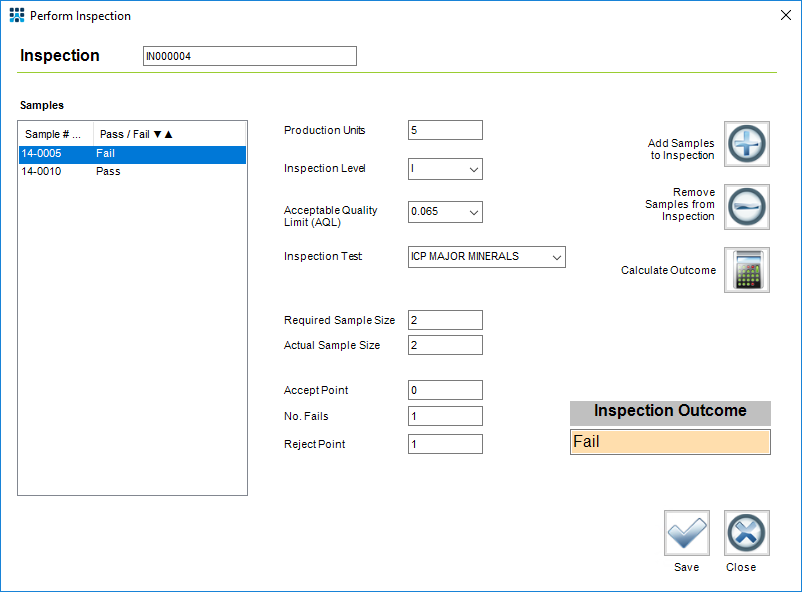Blog: Applications
Using LIMS to Manage AQL Inspection
AQL (Acceptable Quality Limit) sampling is used to determine whether an entire batch (or order) has met a client's specification, based on a statistical sample of that batch.
17th October 2022

Quality inspections usually rely on random sampling of a small percentage of product, rather than trying to test the whole batch. Typically, ISO 2859 - Sampling procedures for inspection of attributes (or national equivalents such as ANSI/ASQC Z1.4, NF06-022, BS 6001, DIN 40080), is used as the basis to define how many of each batch or lot must be tested and what the acceptable failure rate is before the batch will be rejected.
By integrating AQL into your LIMS pass/fail parameters, decisions can be made directly from the analytical results entered.
Within the LIMS the sample size table can be defined. This relates batch or lot size to the number of samples required based on the required inspection levels.
![AQL1]()
Table 1 – Inspection Lot Sample Size Code Letters
For example, if we have a lot size of 5,000 and want to inspect to level II then we would pick the code letter L.
The second table (Sampling and Acceptance Limits) defines the number of samples to be checked and the acceptable failure rate. The code letter L tells us that 200 samples must be taken. This letter also tells us that, for an Acceptable Quality Limit (AQL) of 2.5%, 11 or more failures indicate the batch should be rejected. At an AQL of 1% the batch would be rejected if 6 or more failures occurred within the 200 samples.
![AQL2]()
Table 2 – Single Sample Plan
LIMS table - AQL Inspection Levels
There are three general inspection levels (I, II, & III) in table 1. Inspectors will decide which to use depending on the history of past lot testing.
- I – more relaxed, used where the product is of known good quality
- II – the most widely used inspection level, used by default
- III – higher testing levels, used where the supplier has had past quality problems
ISO 2859 also defines four additional special levels, S1-4, which may be used under special circumstances, for instance where relatively small sample sizes are necessary and larger sampling risks can be tolerated. In practice the inspection level chosen is a trade-off between the cost of the product compared to the cost of, and time spent, doing the inspections. Quality inspectors should define the most relevant inspection level to provide the level of assurance they require.
LIMS Workflow
The defined number of random samples to be tested (200 in the case above) would be taken from the lot, registered in the LIMS, and processed through the analytical testing workflow. Once all the tests have been completed, checked, and approved, a specific AQL inspection screen is used to grade the results.
The AQL inspection screen defines:
- Lot size (Production Units) - 5
- AQL Inspection Level - I
- Acceptable Quality Limit % - 0.25%
The inspection may be carried out against individual tests # (i.e., viscosity of paint), or against all tests assigned to the samples (viscosity, color, lead content, etc.).
![AQL3]()
LIMS AQL Inspection Screen
Pressing the Calculate Outcome button causes the LIMS to:
- Check the sample size required according to AQL rules
- Ensure the number of samples tested is correct
- Check the number of samples that are outside of the required specification
- Provide the inspection outcome for the lot (pass/fail) based on the AQC definition and number of failed samples
In this example testing for heavy metals, the batch is being checked at AQL inspection level I with an AQL of 0.25%. Two samples need to be checked and a failure will occur if more than one sample has failed testing. In this case the entire batch will be rejected because this limit was exceeded.
Easy AQL Inspection Management Using LIMS
Incorporating automated AQL inspection workflows into a LIMS allows repeatable procedures to be put in place. This automated approach to driving AQL standards ensures laboratories serving the inspection industry enforce the quality standards they need, all the time, and with the minimum of overheads.
Matrix Gemini is a fully configurable LIMS which allows the addition of AQL inspection workflows using Matrix Configuration tools. These graphical configuration tools allow controlled changes to be made to the system without the need for software coding skills (C#, Java etc.), ensuring the business and operational needs of laboratories across a range of industries are met with minimum configuration costs.


